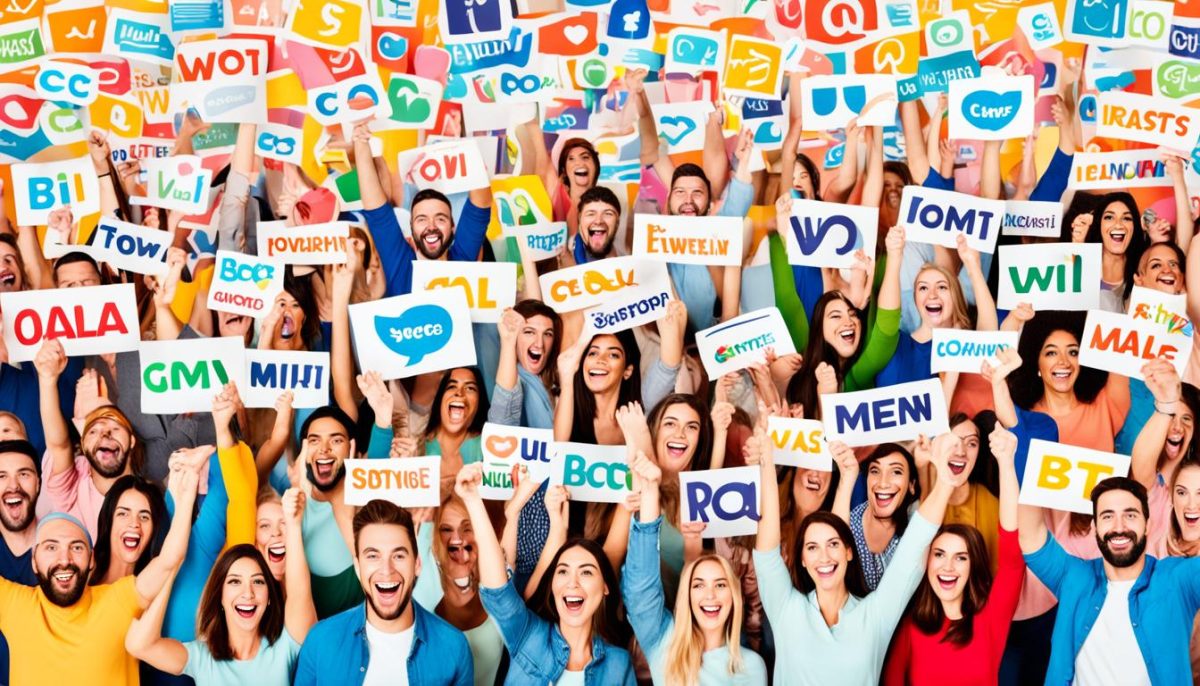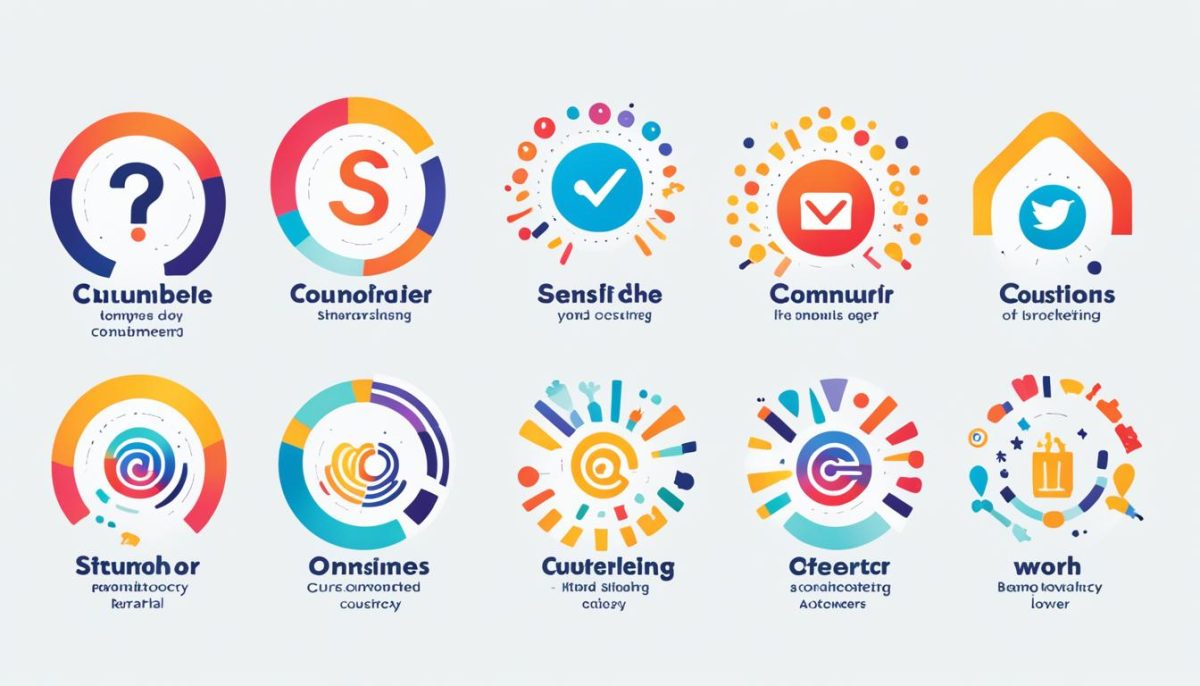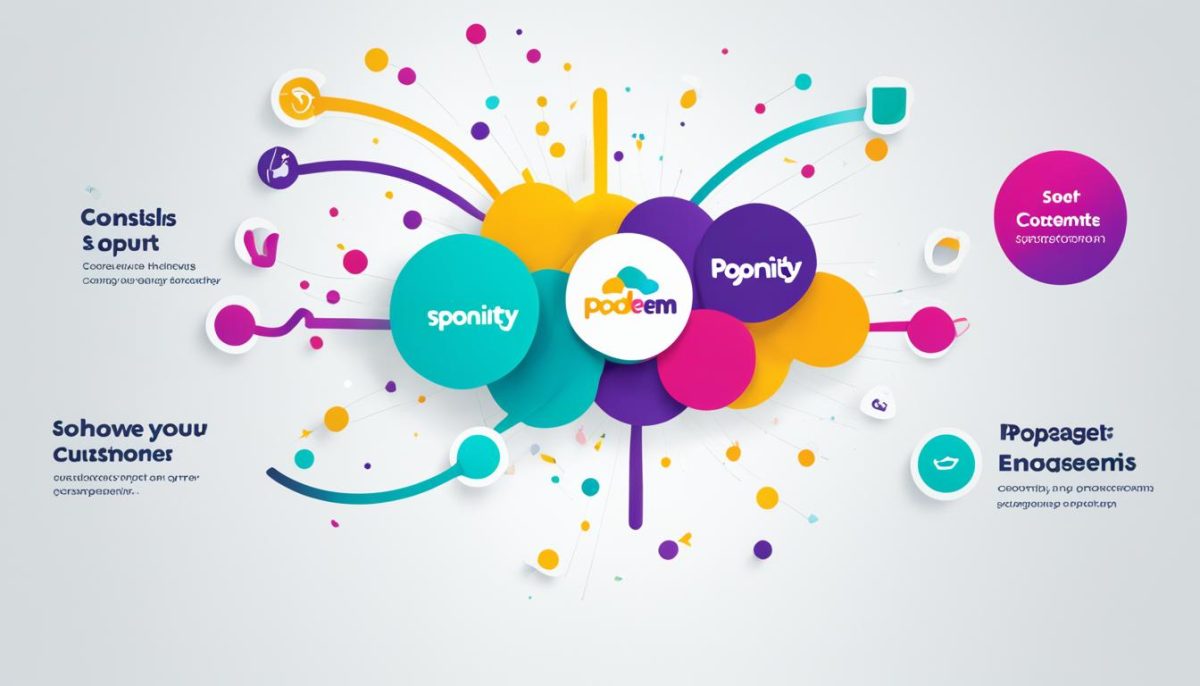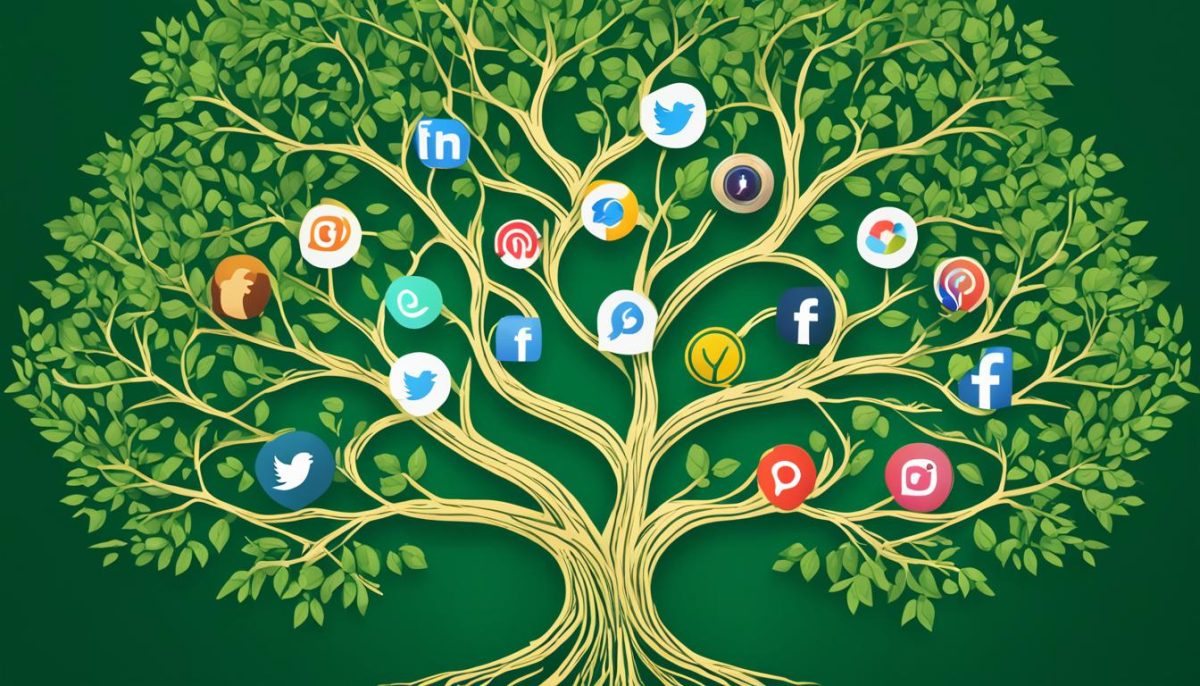Welcome to our article on powerful brand advocacy examples! In this section, we will explore seven real-life cases that can inspire your strategy and help transform your customers into loyal fans. These examples showcase brands that have successfully leveraged brand advocacy to drive engagement and boost their reputation.
Brand advocacy is a powerful marketing strategy that focuses on turning satisfied customers into passionate brand ambassadors. By empowering your customers to share their positive experiences and advocate for your brand, you can establish a strong connection with your audience and inspire others to try your products or services.
Now, let’s dive into the fascinating world of brand advocacy and discover how renowned brands have harnessed its potential to achieve remarkable results. We will explore innovative campaigns, captivating storytelling, and customer co-creation, all aiming to create a positive customer experience and foster long-term loyalty.
Our aim is to provide you with actionable insights to inspire your own brand advocacy strategy. So, buckle up and get ready to learn from the best. These examples will not only showcase the power of brand advocacy but also demonstrate how it can turn your customers into loyal fans and amplify your brand’s reach. Let’s get started!
The Power of User-Generated Content
User-generated content has become a powerful tool in brand advocacy campaigns. Brands are recognizing the value of harnessing the creativity and authenticity of their customers to amplify their message and engage with their audience. By incorporating user-generated content into their marketing strategies, brands can leverage the genuine experiences and testimonials of their customers to build trust and loyalty.
One effective way brands utilize user-generated content is by showcasing customer testimonials. When satisfied customers share their positive experiences with a brand, it serves as social proof and encourages others to trust and engage with the brand as well. These testimonials can be featured on websites, social media platforms, or even in advertisements.
“I’ve been using XYZ brand for years, and it has completely transformed my skincare routine. I can’t recommend it enough!” – Sarah, XYZ brand customer
Another tactic brands employ is collaborating with social media influencers. These individuals have built a strong following and have the ability to sway consumer opinions. By partnering with influencers who align with their brand values, companies can effectively reach their target audience and generate brand advocacy. Influencers can create content that showcases their experience with the brand, encouraging their followers to try the products or services themselves.
For example, the popular beauty influencer, @BeautyByGrace, often collaborates with cosmetic brands to create makeup tutorials and product reviews. Her genuine enthusiasm for the products she uses resonates with her followers, motivating them to consider trying the brand and sharing their own experiences.

Real-Life Success: XYZ Brand and User-Generated Content
A great example of a brand successfully utilizing user-generated content is XYZ Brand. They launched a social media campaign requesting their customers to share their favorite moments using the brand’s products. Customers responded by posting pictures and captions about how XYZ Brand had transformed their daily lives.
XYZ Brand then compiled these user-generated posts into a visually appealing and engaging gallery on their website. This gallery not only showcased the authenticity of their products but also highlighted the positive impact they had on their customers’ lives.
By incorporating user-generated content, XYZ Brand was able to create a sense of community and brand advocacy among their customers. The campaign inspired others to share their own experiences and created a positive ripple effect, attracting new customers and fostering loyalty.
The Role of User-Generated Content in Brand Advocacy Campaigns
User-generated content plays a crucial role in brand advocacy campaigns. It provides an opportunity for brands to amplify their message and connect with their audience on a more personal level. By leveraging customer testimonials and partnering with social media influencers, brands can create a strong foundation of trust and loyalty among their customer base.
As customers share their positive experiences and stories, they become brand ambassadors, spreading the word about the brand’s products or services. This organic form of advertising not only builds credibility but also increases brand awareness and engagement.
| Benefits of User-Generated Content in Brand Advocacy Campaigns |
|---|
| 1. Authenticity and credibility |
| 2. Increased brand awareness |
| 3. Enhanced audience engagement |
| 4. Cost-effective marketing strategy |
| 5. Community building and brand loyalty |
| 6. Social proof for potential customers |
Overall, user-generated content is a powerful tool that can elevate brand advocacy campaigns. By encouraging customers to share their genuine experiences, brands can tap into the creativity and authenticity of their audience to build a dedicated community of advocates. With the rise of social media, user-generated content has become more accessible and influential than ever before.
Creating Emotional Connections through Storytelling
Storytelling has become an essential tool for brands to create emotional connections with their audience. By weaving narratives that resonate with consumers, brands can cultivate a sense of authenticity and loyalty that goes beyond products and services. Authentic narratives have the power to inspire, engage, and convert customers into brand advocates.
One brand that has successfully utilized storytelling to forge emotional connections is Nike. Through their “Just Do It” campaign, Nike has shared inspiring stories of athletes overcoming challenges and pushing their limits. By showcasing the perseverance and determination of these individuals, Nike evokes strong emotions and motivates their audience to strive for greatness.
“The stories we tell ourselves shape our identity. When brands can tap into those stories and make us feel something, it creates a powerful bond between the brand and the consumer.” – Nike Marketing Director
Another brand that excels in creating emotional connections through storytelling is Coca-Cola. Their “Open Happiness” campaign features heartwarming narratives that celebrate joy, friendship, and togetherness. By associating their brand with positive emotions, Coca-Cola builds a deep connection with their consumers, fostering loyalty and advocacy.
Authentic narratives that evoke emotions resonate deeply with consumers. They allow brands to communicate their values, purpose, and mission in a compelling way. When brands share stories that align with the experiences and aspirations of their target audience, they create a sense of empathy and understanding.
Benefits of Emotional Connections
Building emotional connections through storytelling offers numerous benefits for brands:
- Increased brand loyalty: When consumers feel emotionally connected to a brand, they are more likely to remain loyal and choose that brand over competitors.
- Higher customer retention: Emotional connections create a bond that goes beyond transactional relationships, leading to long-term customer retention.
- Word-of-mouth marketing: Consumers who have strong emotional connections with a brand become natural brand ambassadors, spreading positive word-of-mouth and driving new customers.
- Enhanced brand reputation: Brands that establish emotional connections through storytelling build a positive reputation and are seen as trustworthy and relatable.
To further illustrate the power of emotional connections in storytelling, let’s take a closer look at a brand that leverages authentic narratives to build strong brand loyalty.
Case Study: Patagonia
| Brand | Authentic Narrative | Impact |
|---|---|---|
| Patagonia | Environmental responsibility and protection | Patagonia’s commitment to sustainability and activism resonates with their audience, leading to a loyal customer base and passionate brand advocates. |
Patagonia, an outdoor apparel brand, has built a devoted following by sharing stories that emphasize their commitment to environmental responsibility and protection. Through their campaigns, Patagonia highlights their efforts to reduce their environmental footprint and supports various environmental initiatives.
By aligning themselves with a cause that their audience deeply cares about, Patagonia creates an emotional connection based on shared values. Customers who resonate with the brand’s authentic narrative become loyal supporters and ambassadors for Patagonia’s mission.
Empowering Customers through Co-Creation
One of the most powerful strategies for building brand advocacy is through empowering customers through co-creation. When brands actively seek customer feedback and involve their audience in the creation of new products and services, it fosters a sense of ownership and advocacy among their customer base.
By engaging customers in the co-creation process, brands not only gain valuable insights and ideas but also create a deeper connection with their audience. Customers feel heard and valued when their opinions and suggestions are taken into account, which in turn strengthens their loyalty and advocacy towards the brand.
Successful examples of brands practicing co-creation include company XYZ, which regularly seeks customer feedback for their product improvements, and brand ABC, which actively involves customers in the design and creation of new services. These brands have built a loyal customer base by recognizing the expertise and creativity of their customers, and harnessing their ideas to deliver products and services that truly meet their needs.



